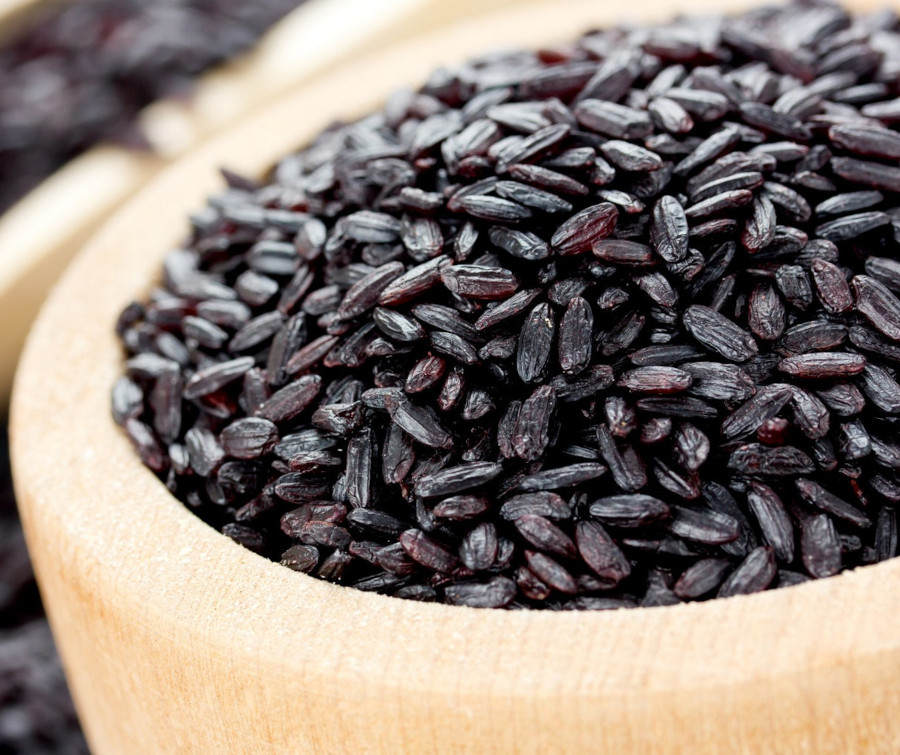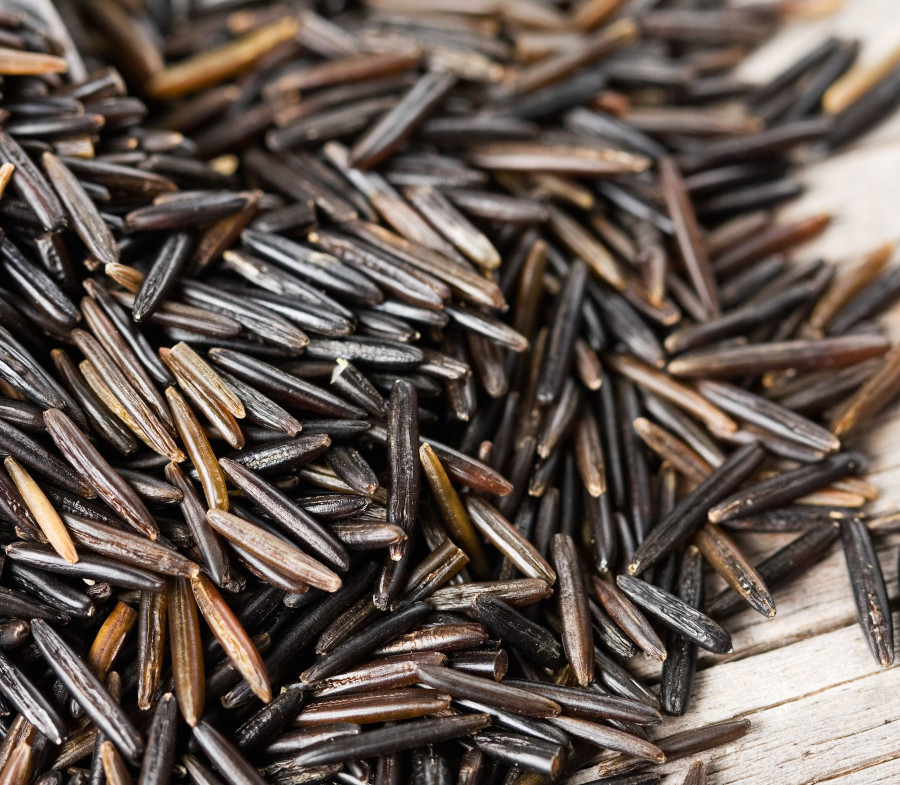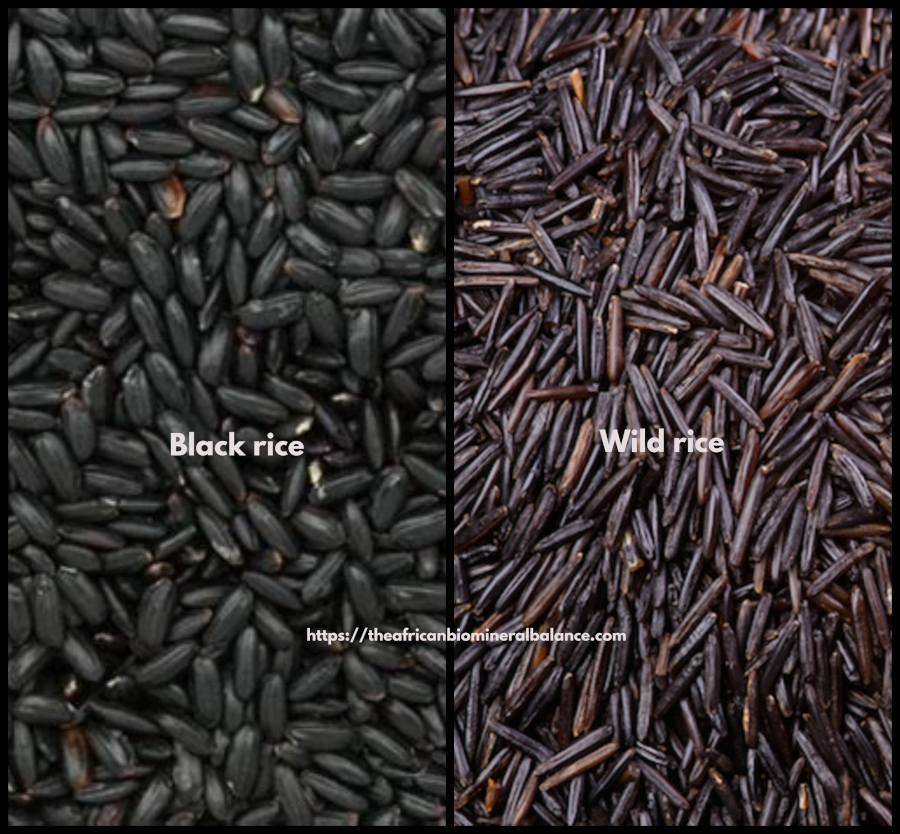Is black rice the same as wild rice?
No, black rice and wild rice are not the same; they are distinct varieties of rice with different characteristics.
Dr. Sebi was asked about this and he explained that the wild rice is natural, while the black rice is a hybrid.
- Black Rice:
- Color: Black rice, also known as forbidden rice, is a dark purple-black grain.
- Origin: It is primarily cultivated in Asia, particularly in countries like China, India, and Indonesia.
- Texture: Black rice has a slightly sticky texture when cooked and, a nutty flavor.
- Wild Rice:
- Color: Wild rice has a dark brown to black color when cooked.
- Origin: Wild rice is native to North America and is found in freshwater lakes and rivers.
- Texture: It has a chewy texture and a nutty, earthy flavor.
In summary, both black rice and wild rice have unique flavors and textures, and they differ in terms of color, origin, and nutrition.
The origin of black rice
Black rice has a long history and is believed to have originated in Asia, particularly in regions like China and India. It has been cultivated for centuries and was once considered a luxury food reserved for royalty and the elite.
Over time, black rice has spread to other parts of the world, and today it is cultivated in various countries, including China, Indonesia, the Philippines, Thailand, and the United States.

The origin of wild rice
Wild rice is not a variety of cultivated rice (Oryza sativa); rather, it belongs to a different genus altogether. The primary species of wild rice that is commonly consumed is known as Zizania, and it is native to North America and parts of Asia. In North America, the most well-known species is Zizania palustris, often referred to as Northern wild rice.
Here are some key points about the origin of wild rice:
- Native Habitat:
- Wild rice is found in freshwater lakes, rivers, and other aquatic habitats. It is well adapted to grow in shallow waters and marshy areas.
- Geographical Distribution:
- The native range of wild rice in North America includes regions such as the Great Lakes, parts of Canada, and the upper Midwest of the United States. In Asia, wild rice species can be found in countries like China.
- Cultural and Culinary Importance:
- Wild rice has been an important traditional food source for various Native American tribes in North America. It is known for its distinct nutty flavor and chewy texture.
- Cultivation:
- While wild rice is still harvested from natural habitats, there are also cultivated varieties. Cultivated wild rice is often grown in paddies or controlled aquatic environments to mimic its natural habitat.
- Species Variation:
- There are different species of wild rice within the Zizania genus, and their characteristics can vary. Northern wild rice (Zizania palustris) is one of the most commonly harvested and consumed species.
Wild rice is distinct from the more commonly cultivated rice varieties, such as white rice, brown rice, or black rice.
Basic analysis of black rice
Black Rice:
- Scientific Name:
- Oryza sativa (black rice is a variety of Oryza sativa)
- Domestic Origin:
- Black rice is believed to have originated in Asia, particularly in regions such as China and India. Over time, its cultivation has expanded to various countries across Asia and beyond.
- Culinary Use:
- Black rice is used in a variety of culinary applications, from savory dishes to desserts.

Basic analysis of wild rice
Wild Rice:
- Scientific Name:
- The scientific name for wild rice is typically associated with the genus Zizania. The most commonly harvested species in North America is Zizania palustris, known as Northern wild rice.
- Domestic Origin:
- Wild rice is native to North America, primarily in regions around the Great Lakes, parts of Canada, and the upper Midwest of the United States. There are also wild rice species found in Asia, such as Zizania latifolia in China.
- Nutritional Profile:
- Wild rice is nutritionally rich, providing a good source of dietary fiber, and various essential minerals such as manganese, phosphorus, and magnesium. It is also low in fat.
- Culinary Use:
- Wild rice has a distinct nutty flavor, a chewy texture, and a slightly earthy taste. It is often used in a variety of culinary applications, from side dishes to salads, soups, and stuffing. It is considered a whole grain and is appreciated for its unique taste and nutritional benefits.
- Cultural and Culinary Significance:
- Wild rice holds cultural importance, particularly for Native American tribes in North America, where it has been a traditional food source for centuries. It has also gained popularity in modern cuisine due to its unique flavor and health benefits.
- Harvesting:
- Wild rice is typically harvested by hand, especially in its natural habitat. The grains are often collected by gently knocking them into a canoe or boat, and then they are dried before consumption.
- Cultivation:
- While wild rice is often harvested from its natural habitat, there are also cultivated varieties. Cultivated wild rice is grown in controlled environments, such as paddies, to mimic its native conditions.
In summary, wild rice is a distinct species from the more common cultivated rice varieties, and it has a rich nutritional profile and cultural significance, especially in North America.
Is wild rice a wild species?
Yes, wild rice is derived from wild grasses and is considered a semi-aquatic grass species. The primary species of wild rice commonly harvested for consumption is Zizania, and it is indeed a wild plant. It is not a domesticated or cultivated variety like Oryza sativa, which includes commonly consumed rice varieties such as white rice, brown rice, and black rice.
Wild rice is typically found growing in shallow freshwater areas such as lakes, rivers, and marshes. It has been traditionally harvested from these natural habitats by indigenous communities, especially in North America. While there are also cultivated varieties of wild rice, the plant’s origin is rooted in the wild, and its cultivation often seeks to replicate its natural growing conditions.













